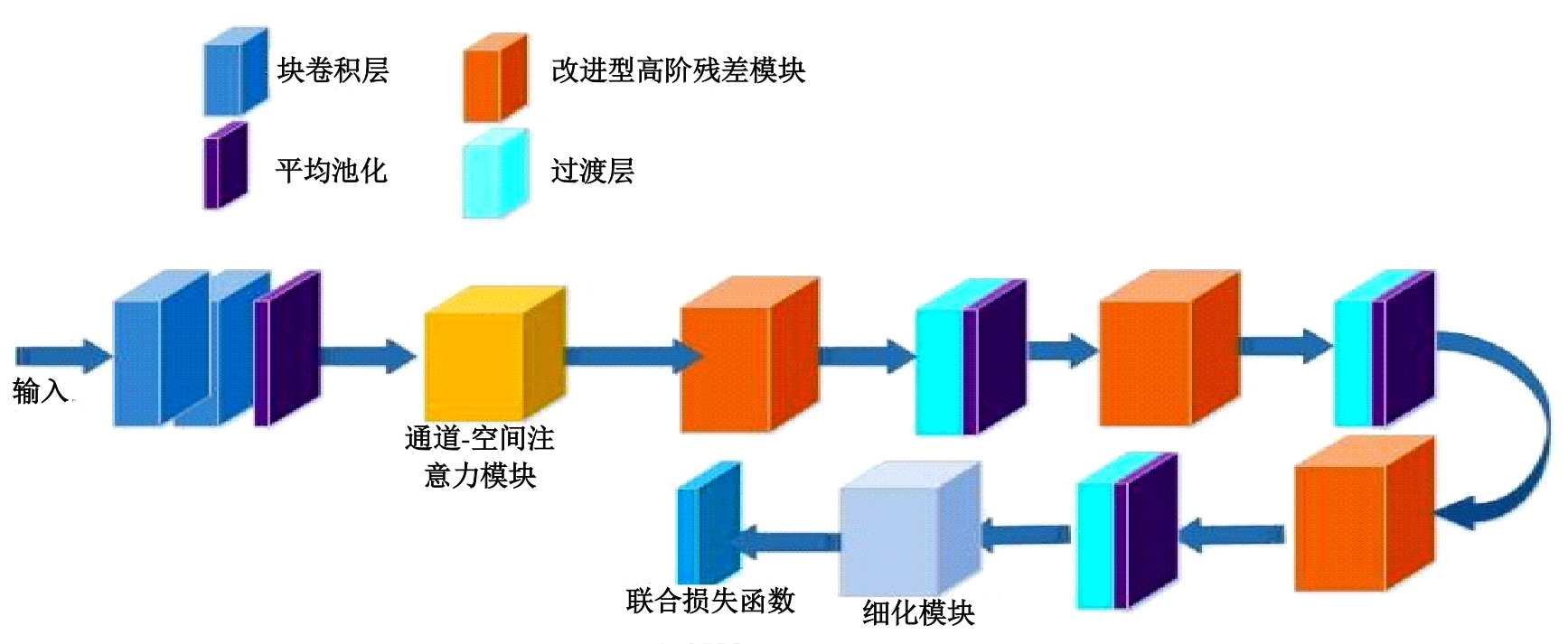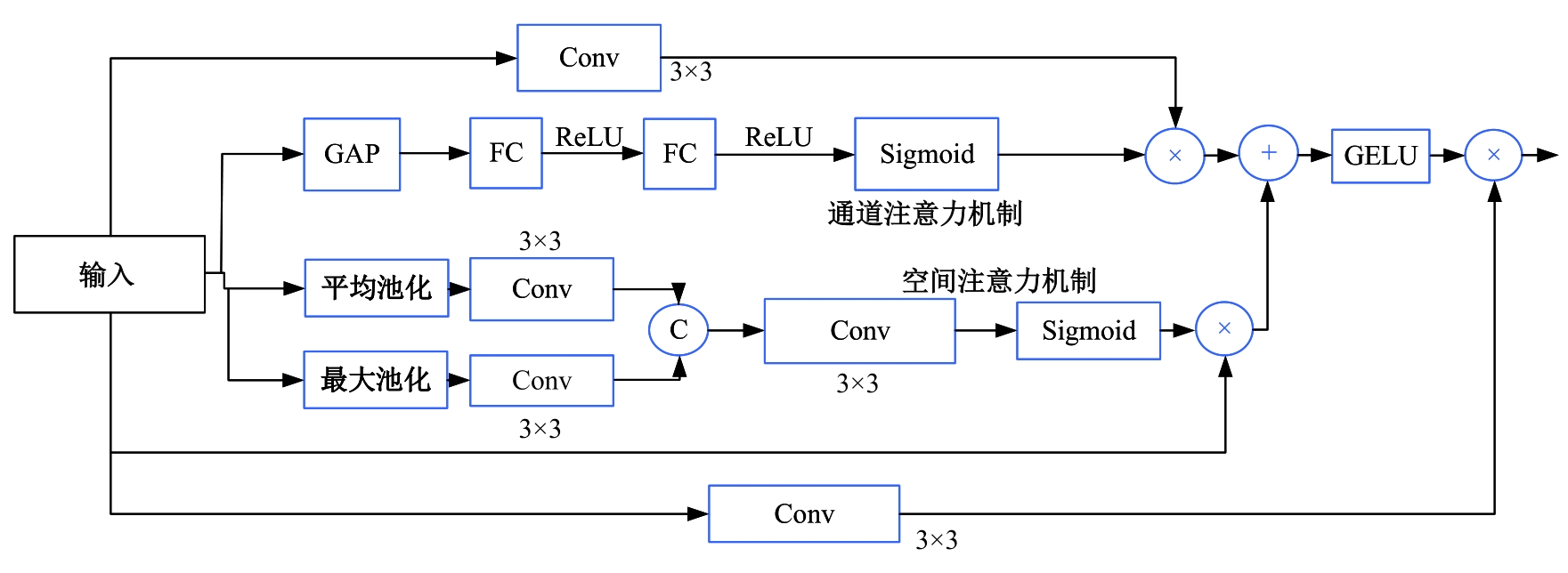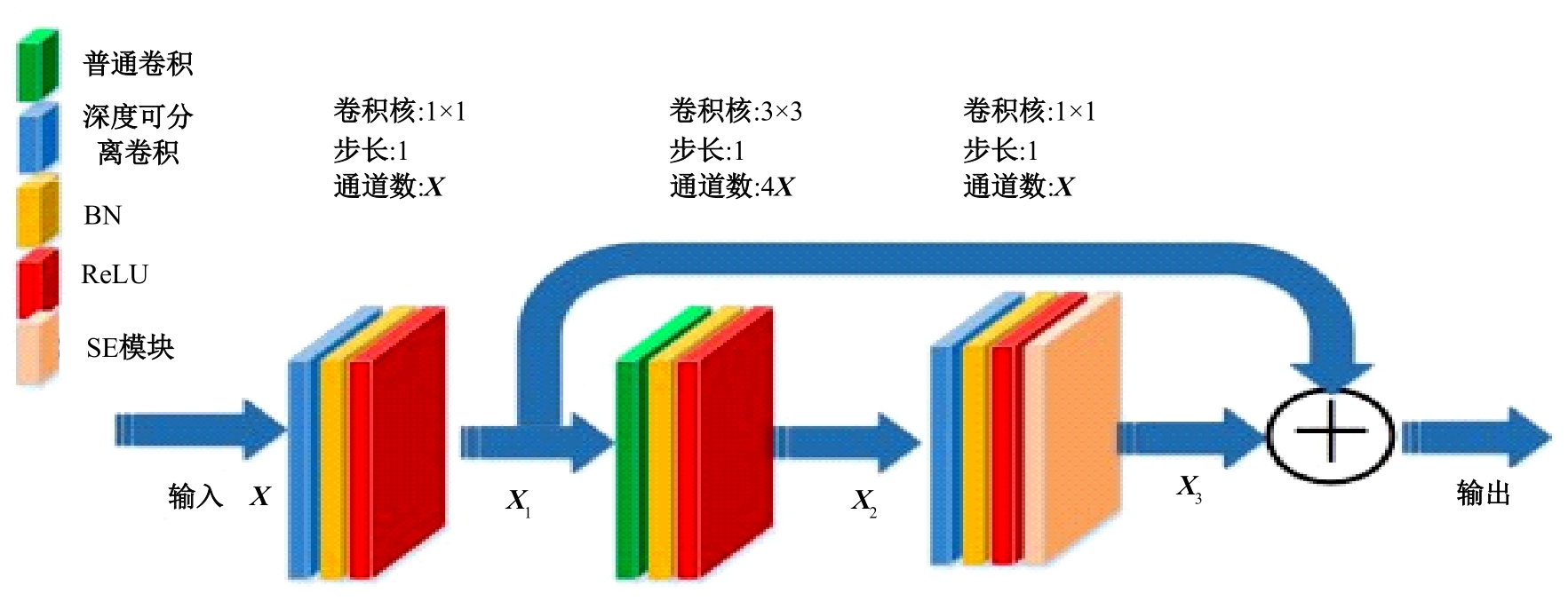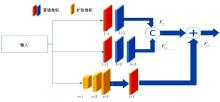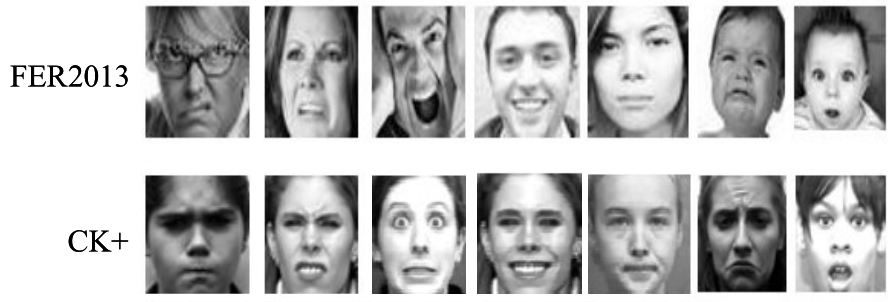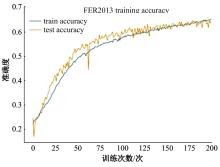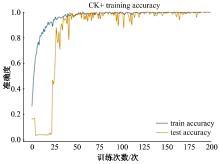Journal of Jilin University(Engineering and Technology Edition) ›› 2024, Vol. 54 ›› Issue (8): 2319-2328.doi: 10.13229/j.cnki.jdxbgxb.20221345
Previous Articles Next Articles
Face expression recognition based on attention mechanism of convolution network
Xin-gang GUO1( ),Chao CHENG2(
),Chao CHENG2( ),Zi-qi SHEN2
),Zi-qi SHEN2
- 1.Medical Image Processing Technology Innovation Laboratory of Jilin Province,Changchun University of Technology,Changchun 130012,China
2.School of Computer Science and Engineering,Changchun University of Technology,Changchun 130012,China
CLC Number:
- TP391
| 1 | 方明, 陈文强. 结合残差网络及目标掩码的人脸微表情识别[J]. 吉林大学学报: 工学版, 2021, 51(1): 303-313. |
| Fang Ming, Chen Wen-qiang. Facial micro-expression recognition based on residual error network and object mask[J]. Journal of Jilin University(Engineering and Technology Edition), 2021, 51(1): 303-313. | |
| 2 | Ekman P, Friesen W V. Contants across cultures in the face and emotion[J]. Journal of Personality and Social Psychology, 1971, 17(2): 124-129. |
| 3 | 郑伟鹏. 基于深度学习的人脸表情识别方法研究[D]. 桂林: 广西师范大学, 2022. |
| Zhen Wei-peng. Research on facial expression recognition based on deep learning[D]. Guilin: Guangxi Normal University,2022. | |
| 4 | 孙旭菲, 缪新颖, 毕甜甜, 等. SFSR-Age: 一种基于人脸强语义的年龄识别算法[J]. 吉林大学学报:理学版, 2024, 62(2): 347-0356. |
| Sun Xu-fei, Miao Xin-ying, Bi Tian-tian, et al. SFSR-Age: an age recognition algorithm based on strong facial semantics[J]. Journal of Jilin University (Science Edition), 2024, 62(2): 347-0356. | |
| 5 | 葛延良, 孙笑笑, 张乔, 等. 基于循环生成对抗网络的人脸素描合成[J]. 吉林大学学报:理学版, 2022, 60(4): 897-905. |
| Ge Yan-liang, Sun Xiao-xiao, Zhang Qiao, et al. Face sketch synthesis based on cycle-generative adversarial networks[J]. Journal of Jilin University (Science Edition), 2022, 60(4): 897-905. | |
| 6 | Ben X Y, Ren Y, Zhang J P, et al. Video-based facial micro-expression analysis: a survey of datasets, features and algorithms[J]. IEEE Transactions on Pattern Analysis and Machine Intelligence, 2022, 44(9): 5826-5846. |
| 7 | 贲晛烨, 杨明强, 张鹏, 等. 微表情自动识别综述[J]. 计算机辅助设计与图形学学报, 2014, 26(9): 1385-1395. |
| Xian-yu Ben, Yang Ming-qiang, Zhang Peng, et al. Survey on automatic micro expression recognition methods[J]. Journal of Computer-Aided Design and Computer Graphics, 2014, 26(9): 1385-1395. | |
| 8 | 张超,卢韶芳,周付根. 眼部特征自动检测定位方法[J].吉林大学学报: 工学版,2015,45(5): 1717-1723. |
| Zhang Chao, Lu Shao-fang, Zhou Fu-gen. Automatic detection localization method of eye feature[J]. Journal of Jilin University(Engineering and Technology Edition), 2015, 45(5): 1717-1723. | |
| 9 | 谢银成,黎曦,李天,等. 基于改进ResNet和损失函数的表情识别[J]. 自动化与仪表, 2022, 37(4): 64-69. |
| Xie Yin-cheng, Li Xi, Li Tian, et al. Expression recognition based on improved ResNeT and loss function[J]. Automation and Instrumentation, 2022, 37(4): 64-69. | |
| 10 | 何超,侯明. 基于改进卷积神经网络的人脸表情识别方法[J]. 信息技术,2022,2022(5): 107-111. |
| He Chao, Hou Ming. Facial expression recognition base on improved convolutional neural network[J]. Information Technology, 2022,2022(5) : 107-111. | |
| 11 | 崔子越, 皮家甜, 陈勇, 等. 结合改进 VGGNet 和Focal Loss的人脸表情识别[J]. 计算机工程与应用,2021,57(19): 171-178. |
| Cui Zi-yue, Pi Jia-tian, Chen Yong, et al. Facial expression recognition combined with improved VGGNet and Focal Loss[J]. Computer Engineering and Applications, 2021, 57(19): 171-178. | |
| 12 | 亢洁,李佳伟,杨思力. 基于域适应卷积神经网络的人脸表情识别[J]. 计算机工程,2019,45(12): 201-206. |
| Kang Jie, Li Jia-wei, Yang Si-li. Facial expression recognition based on convolution neural network with domain adaption[J]. Computer Engineering, 2019, 45(12): 201-206. | |
| 13 | 张波,兰艳亭,李大威,等. 基于卷积网络通道注意力的人脸表情识别[J]. 无线电工程,2022,52(1):148-153. |
| Zhang Bo, Lan Yan-ting, Li Da-wei, et al. Face expression recognition based on convolution network channel attention[J]. Radio Engineering, 2022, 52(1): 148-153. | |
| 14 | Jiang D H, Hu Y Z, Dai L, et al. Facial expression recognition based on attention mechanism[J]. Scientific Programming, 2021, 2021(1):1-5. |
| 15 | Sanghyun W, Jongchan P, Joonyoung L, et al. CBAM: convolutional block attention module[J]. European Conference on Computer Vision, 2018: 3-19. |
| 16 | 张强, 彭骨, 薛陈斌. 基于改进图注意力网络的油井产量预测模型[J]. 吉林大学学报: 理学版, 2024, 62(4): 933-942. |
| Zhang Qiang, Peng Gu, Xue Chen-bin. Oil well production prediction model based on improved graph attention network[J]. Journal of Jilin University (Science Edition), 2024, 62(4): 933-942. | |
| 17 | 余久方, 李中科, 陈涛. 基于分离混合注意力机制的人脸表情识别[J]. 电讯技术, 2022, 62(9): 1207-1214. |
| Yu Jiu-fang, Li Zhong-ke, Chen Tao. Facial expression recognition based on separate hybird attention mechanism[J]. Telecommunication Engineering, 2022, 62(9): 1207-1214 . | |
| 18 | 梁华刚,王亚茹,张志伟. 基于Res-Bi-LSTM的人脸表情识别[J]. 计算机工程与应用, 2020, 56(13): 204-209. |
| Liang Hua-gang, Wang Ya-ru, Zhang Zhi-wei. Facial expression recognition based on Res-Bi-LSTM[J]. Computer Engineering and Applications, 2020, 56(13): 204-209. | |
| 19 | Sanghyun W, Jongchan P, Joonyoung L, et al. CBAM: Convolutional block attention module[C]// European Conference on Computer Vision, Munich, Germany, 2018: 3-19. |
| 20 | He K, Zhang X, Ren S, et al. Deep residual learning for image recognition[C]//Proceedings of the IEEE Computer Vision and Pattern Recognition, Nevada, USA, 2016: 770-778. |
| 21 | Lucey P, Cohn J F, Kanade T, et al. The extended cohn-kanade dataset (CK+): a complete dataset for action unit and emotion-specified expression[C]// Proceedings of 2010 IEEE Computer Society Conference on Computer Vision and Pattern Regression-Workshops, San Francisco, USA, 2010: 94-101. |
| 22 | Hu J, Shen L, Sun G. Squeeze-and-excitation networks[C]// Proceedings of the IEEE Conference on Computer Vision and Pattern Recognition, Salt Lake City, USA, 2018: 7132-7141. |
| 23 | 刘全明, 辛阳阳. 端到端的低质人脸图像表情识别[J]. 小型微型计算机系统, 2020, 41(3): 668-672. |
| Liu Quan-ming, Xin Yang-yang. End-to-end low-quality face image expression recognition[J]. Small Microcomputer System, 2020, 41(3): 668-672. | |
| 24 | Chollet F. Xception: deep learning with depth wise separable convolutions[C]//IEEE Conference on Computer Vision and Pattern Recognition, Hawaii, USA, 2017: 1800-1807. |
| 25 | 程学军, 邢萧飞. 利用改进型VGG标签学习的表情识别方法[J]. 计算机工程与设计, 2022, 43(4): 1134-1144. |
| Chen Xue-jun, Xing Xiao-fei. An expression recognition method based on improved VGG tag learning[J]. Computer Engineering and Applications, 2022, 43(4):1134-1144. | |
| 26 | 赵家琦, 周颖玥, 王欣宇, 等. 采用支路辅助学习的人脸表情识别[J]. 计算机工程与应用, 2022, 58(23): 151-160. |
| Zhao Jia-qi, Zhou Ying-yue, Wang Xin-yu, et al. Facial expression recognition using branch-assisted learning[J]. Computer Engineering and Applications. 2022, 58(23): 151-160. | |
| 27 | 马金峰. 基于密集连接卷积结构的人脸表情识别研究[J]. 电脑与电信, 2021, 2021(4): 1-5. |
| Ma Jin-feng. Research on facial expression recognition based on dense convolution structure[J]. Computers and Telecommunications, 2021, 2021(4): 1-5. | |
| 28 | 高涛, 邵倩, 张亚南, 等. 基于深度残差网络的人脸表情识别研究[J]. 电子设计工程, 2020, 28 (23): 101-104. |
| Gao Tao, Shao Qian, Zhang Ya-nan,et al. Research on facial expression recognition based on depth residual network[J]. Electronic Design Engineering, 2020, 28(23): 101-104. | |
| 29 | 刘尚旺, 刘承伟, 张爱丽. 基于深度可分离卷积神经网络的实时人脸表情和性别分类[J]. 计算机应用, 2020, 40(4): 990-995. |
| Liu Shang-wang, Liu Cheng-wei, Zhang Ai-li. Real-time facial expression and gender recognition based on depthwise separable convolutional neural network[J]. 2020, 40(4): 990-995. | |
| 30 | 石翠萍, 谭聪, 左江, 等. 基于改进AlexNet卷积神经网络的人脸表情识别[J]. 电讯技术, 2020, 60 (9): 1005-1012. |
| Shi Cui-ping, Tan Cong, Zuo Jiang, et al. Facial expression recognition based on improved AlexNet convolutional neural network[J]. Telecommunications Technology, 2020, 60(9): 1005-1012. |
| [1] | Yang LU,Shi-gang WANG,Wen-ting ZHAO,Yan ZHAO. Facial expression recognition based on separability assessment of discrete Shearlet transform [J]. Journal of Jilin University(Engineering and Technology Edition), 2019, 49(5): 1715-1725. |
|

